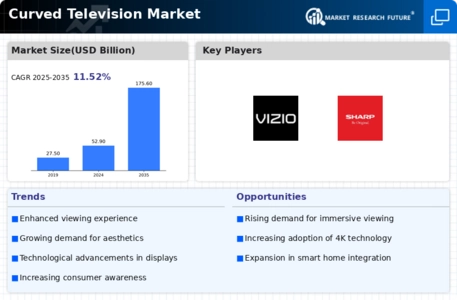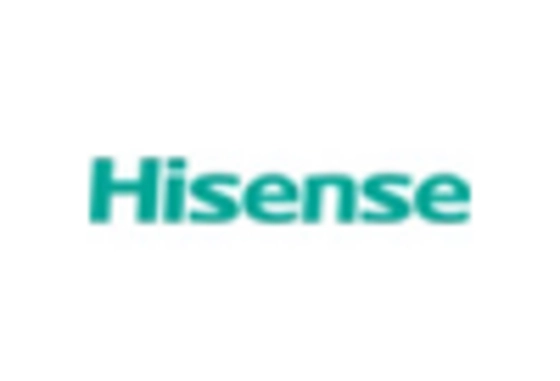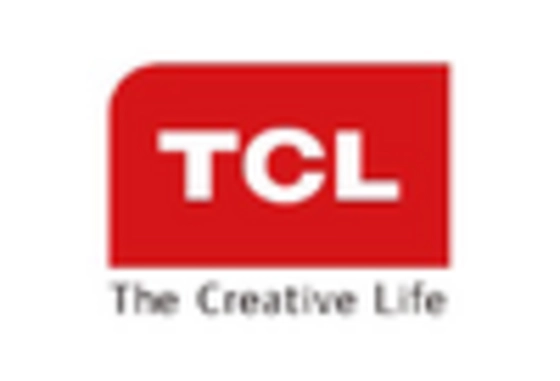Technological Advancements
Technological advancements play a crucial role in shaping the Curved Television Market. Innovations in display technology, such as OLED and QLED, have significantly improved the performance of curved televisions, making them more appealing to consumers. These technologies enhance color accuracy, contrast ratios, and overall picture quality, which are essential factors for buyers. Furthermore, the integration of smart features, such as streaming capabilities and voice control, has made curved televisions more versatile. As manufacturers continue to invest in research and development, the market is likely to see an influx of new models that incorporate cutting-edge technology, thereby driving sales and expanding consumer interest.
Enhanced Viewing Experience
The Curved Television Market is experiencing a surge in demand due to the enhanced viewing experience that curved screens provide. These televisions are designed to create a more immersive environment, allowing viewers to feel as though they are part of the action. The curvature of the screen helps to reduce distortion and provides a wider field of view, which is particularly appealing for consumers who prioritize high-quality visuals. As a result, the market for curved televisions is projected to grow at a compound annual growth rate of approximately 8% over the next few years. This growth is driven by advancements in display technology, which continue to improve picture quality and viewer engagement.
Rising Consumer Preferences
Consumer preferences are shifting towards more innovative and aesthetically pleasing designs, which is a key driver in the Curved Television Market. As consumers become more discerning about their home entertainment systems, they are increasingly drawn to products that not only perform well but also enhance the overall decor of their living spaces. Curved televisions, with their sleek and modern designs, appeal to this demographic. Market data indicates that approximately 30% of consumers are willing to pay a premium for televisions that offer unique designs and features. This trend suggests that manufacturers must focus on both functionality and aesthetics to capture the attention of potential buyers.
Competitive Pricing Strategies
Competitive pricing strategies are emerging as a significant driver in the Curved Television Market. As more manufacturers enter the market, the competition has intensified, leading to a variety of pricing options for consumers. This increased competition allows consumers to choose from a range of products that fit their budgets, making curved televisions more accessible. Market data reveals that the average price of curved televisions has decreased by approximately 15% over the past few years, which has encouraged more consumers to consider purchasing these models. As pricing continues to evolve, it is likely that the market will see a broader adoption of curved televisions, particularly among price-sensitive consumers.
Increased Availability of Content
The availability of diverse content is another driving force in the Curved Television Market. As streaming services proliferate and offer high-definition content, consumers are more inclined to invest in advanced television systems that can deliver superior viewing experiences. Curved televisions are particularly well-suited for this purpose, as they enhance the visual quality of movies, sports, and gaming. Market analysis suggests that the rise of 4K and 8K content is likely to further boost the demand for curved televisions, as consumers seek to maximize their viewing experiences. This trend indicates a growing synergy between content availability and television technology, which could lead to increased sales in the coming years.


















Leave a Comment